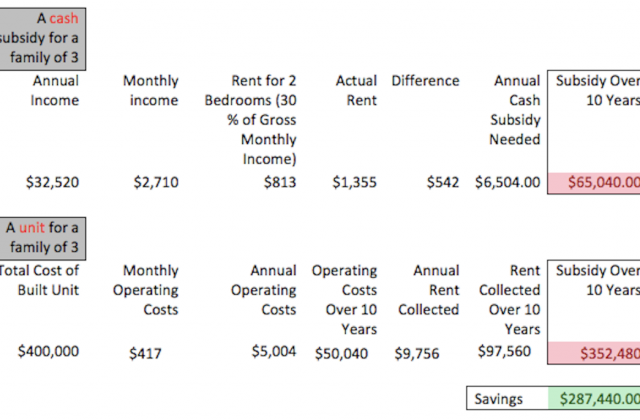Trends to Watch in 2017: Scrutiny of the Non-Profit Housing Industrial Complex
I wrote a post at Forbes in late November that sparked kind of a firestorm among people who make money from the financing and construction of non-profit subsidized housing. The post, “How Trump Might Drain the Low Income Housing Tax Credit Swamp,” did have a click batey headline I’ll admit. But it got a lot of attention, over 6000 people at least clicked on the post. And one list serve lit up with people worrying that the post would create, “a negative impression in a perilous environment.” I also had to correct a mistake I made implying that low income housing tax credits require paying prevailing wages; they don’t, but one syndicator couldn’t think of any project that does not end up paying the higher wages because of other money used to leverage tax credit equity. This year could be the year, though, when the media and State government starts asking, “Why is non-profit subsidized housing so expensive to build?”
I’ve already approached legislators about the idea of an audit and even, perhaps, prohibiting the use of Housing Trust Fund dollars in any jurisdiction that passes Mandatory Inclusionary Zoning (MIZ). I’ve had problems with the way we fund non-profit housing since I was working to get funding for a project I was working on. It isn’t that I think we shouldn’t have subsidies for housing. In fact, I think subsidies are essential and will always be needed to help families and households with fewer dollars to spend on everything, including housing. I’ve suggested that instead of laundering money wrung out of the production of market rate housing through expensive City bureaucracy the way MIZ does, we’d be better off making cash payments to households coming up short when they pay rent.
If the press and public knew just how inefficient our system of producing subsidized units I think they’d demand improvements of that system, and instead of fighting more scrutiny (as I am sure they will), non-profit housing builders should welcome the improvements that would come from an audit. And they should join forces with us to reduce regulatory hurdles that add the same costs to subsidized housing as to market rate housing. Instead, we have a broken and bent political process that is going to essentially extort money from market rate builders, a cost that will be carried by consumers in the end, to build a small number of enormously expensive subsidized units. I don’t use the word extortion lightly. Google defines extortion as “obtain[ing] (something) by force, threats, or other unfair means.”
Remember what the Mayor said about MIZ just about a year ago:
The heart of HALA is you don’t get to develop housing in this city, multifamily housing, unless you build affordable housing as part of it. That is the key piece to it. We have developed . . . .We have grown as a city, but we have not grown affordably. What we are saying is, if you are going to build a multifamily unit in an urban village, you are going to build affordable housing, or you are going to pay penalties that will go into a fund for building affordable housing.
This is all in service not of lowering overall housing prices, but handing the “penalties” to non-profit housing developers who have held the process hostage demanding more cash to put into their expensive projects. That isn’t fair, especially for renters and home buyers who will bear the burden of these costs in the form of higher housing prices. And as I’ve said before the means being used to take the money is through an illegal, unauthorized tax. I hope by a year from now we’re in a different place, working more collaboratively on using our subsidy dollars more efficiently and reduces costs for all builders of housing.


